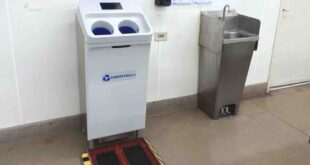According to the US Bureau of Labor Statistics, the manufacturing industry experienced the second-largest increase in resignation rates in 2021, increasing 1.2% since 2020. This increased resignation rate is second only to the leisure and hospitality industries. Neil Ballinger discusses solutions to the top stresses faced by factory-based manufacturing employees.
Although not all industries are experiencing the effects of the ‘Great Resignation’, statistics show that lower-paid employees are the ones leading the charge, especially in manufacturing. Within manufacturing, those in lower-paying non-durable goods had the highest resignation rate.
The manufacturing industry is not known for its high turnover rate, so what has changed and how can employers address these issues?
At the breaking point
Many factors can contribute to an employee’s resignation, but there are some common stressors across the industry that if addressed could decrease the resignation rate. In fast-paced, physical tasks like some of those in factory-based manufacturing, it is no surprise that the high demands on the body and mind of employees are one of the most stressful parts of the job. With the large production quotas, employees can often feel overwhelmed, which can result in excessive stress and, in some cases, burnout.
Burnout is a state of emotional and physical exhaustion caused by constant exposure to unrelenting stress over an extended period. According to the American Psychological Association, workplace stress costs the US economy more than 500 billion US dollars every year and 550 million workdays are lost due to stress on the job.
Many reports suggest that the causes of burnout and resignation rates are employees not feeling valued and performing boring, monotonous work. This is something a wage increase cannot solve on its own. For lower-paying manufacturing jobs, manufacturers should seek to increase their employees’ compensation, but they also need to boost engagement.
Industry 4.0 is digitalising manufacturing, which can help employers reduce turnover rates. By automating a repetitive and nonengaging task, such as using machine vision systems for quality checks rather than employing human inspectors, employers can free up employees’ time for more engaging work and reduce stress.
Spotlight on safety
Another common workplace stress in manufacturing is a hazardous work environment. A factory is no easy place to work and often requires hard physical exertions. Implementing digital technologies, such as exoskeletons and palletizing robots, can help reduce accidents. Therefore, decreasing the amount of time off for injuries while also lowering maintenance costs.
There are, of course, many various stressors manufacturing employees face, but issues such as monotonous work and safety concerns are all things employers can and should aim to address. Implementing technologies to reduce the strain put on employees is not only beneficial for workers, but also for the business. A better, more engaging work environment can increase productivity. According to a recent study by Manufacturing, engaged employees’ productivity is 70% higher than those of non-engaged workers. This study also found that engaged employees had better safety records, lower turnover rates and greater profitability.
By minimising the impact of the most common stressors in manufacturing, manufacturers can maximise the productivity of the company. With all the disruptions manufacturing can face, it is time for employers to take control of manageable disruptions, such as worker burnout and injuries.
Neil Ballinger is head of EMEA for global supplier of quality automation components EU Automation.
 Engineer News Network The ultimate online news and information resource for today’s engineer
Engineer News Network The ultimate online news and information resource for today’s engineer




